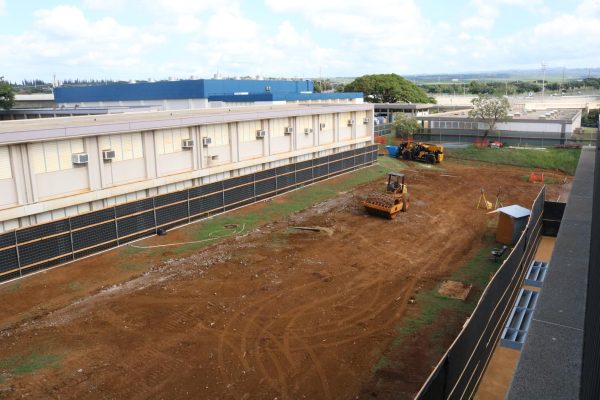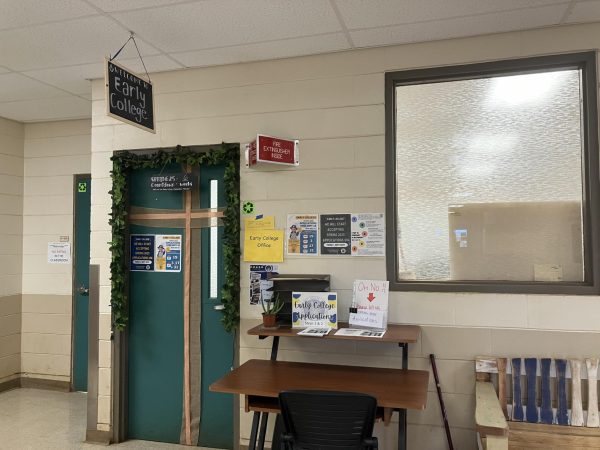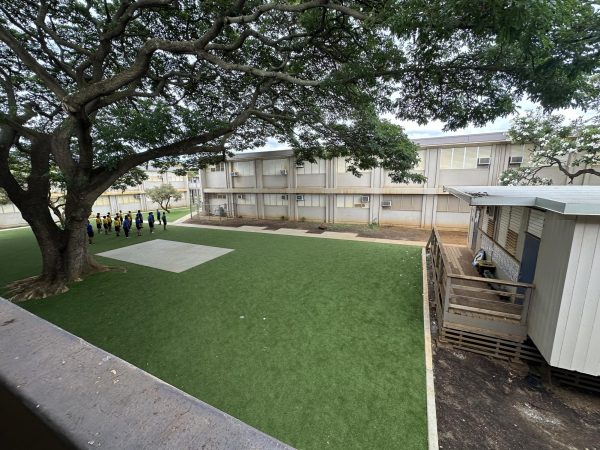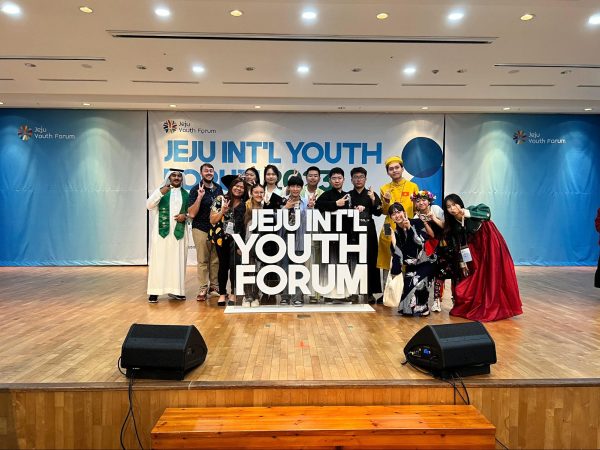Capstone students innovate through design thinking and grant writing
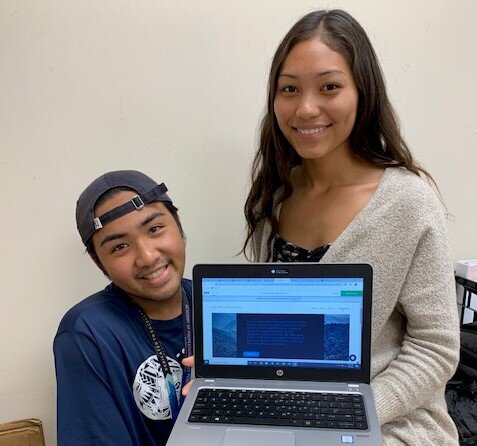
Photo courtesy of Rachel Domingo.
Pictured: Jerrick Josue and Kuualoha Andrade display a prototype of the website they designed to support the Office of the Public Defender.
Click on the hyperlinks throughout this article to get an in-depth look some students’ project proposals, grant proposals, and prototypes.
This year’s Waipahu High School’s senior Innovations STEM Capstone students applied for grants to create lifelike prototypes that address community issues.
The capstone class comprises three academies: the Academy of Professional and Public services (APPS), the Academy of Natural Resources (ANR), and the Academy of Arts and Communications (AAC). Students from each academy or pathway are led by a specific teacher. Justin Pintande supports the Law and Justice Pathway students, David Dela Cruz supports the culinary pathway, and Rachel Domingo leads the ANR and AAC students.
The Innovations capstone class mainly focuses on the design thinking process, in which students follow five steps: empathize, define, ideate, prototype, and test.
During the “empathize” phase of design thinking, students thought of issues relevant to their academies or their community. Some issues included plastic use, mental illness, student parking, and the bell schedule. During this phase, students conducted interviews with their intended users and experts in their field.
Students then identified problems related to their topics, putting them into “POV statements.” Jerrick Josue and Kuualoha Andrade, pictured above, focused on the Public Defender’s office’s needs. Their POV statement was, “The Public Defenders need a way to organize their work in a way that makes them feel more efficient with their time with clients.”
Then, in the “ideate” phase, students were encouraged to generate ideas to solve their problem, whether they were wild and expensive or simple and feasible. Students then had to decide which solution would best fit their problems.
During the “prototype” phase, students listed the resources required to create rough prototypes for their users. Director of Extension Dr. Arnold Laanui began providing students and teachers with insights on their projects, and students were presented with the opportunity to write grant proposals to fund more advanced prototypes.
This is the first year that any capstone class has been provided with the opportunity for all projects to potentially benefit from grants. Grants would have to address reasonable needs related to students’ projects. For example, if students were making a website with advanced features for their prototype, they could apply for a grant to implement those features.
The class is currently moving into the “test” phase of the process, using a gallery walk to gather feedback from their pathway teachers and their classmates. After receiving input about their projects, the students are able to go back to the “prototype” phase and change their product so it is suitable for their users. If they receive grants, the funds would help students improve their prototypes.
Trishia Cabatic and Nicole Daquioag’s Innovation STEM project is about student mental health and its link to the pressures of school. Their solution is to renovate the school library to provide resources for students to relieve their stress. For their first prototype, Cabatic and Daquioag created a layout of the library on folder paper. This visual was created with the limited materials and resources available in the classroom. However, in their grant proposal, they are asking for at least $100 towards a subscription to a floor plan creator.
Kawika Pegram is seeking funding for advertisements related to his prototype so he can share it with real users. He plans to create mini workshops to educate the youth about the presidential election.
Another group aims to create a set of bioplastic cutlery, while others are centering around technology-related prototypes such as websites and apps.
On April 3, the students will deliver their final presentations and share the best versions of their prototypes in the WHS library. Administrators, teachers, staff, and industry professionals will judge each group’s projects.

